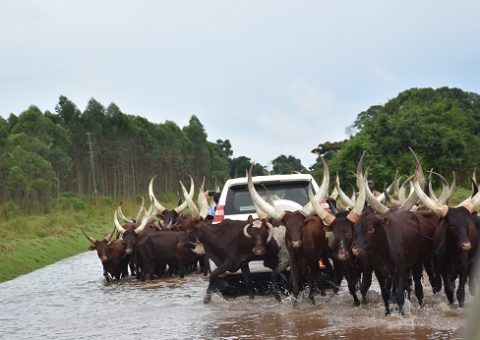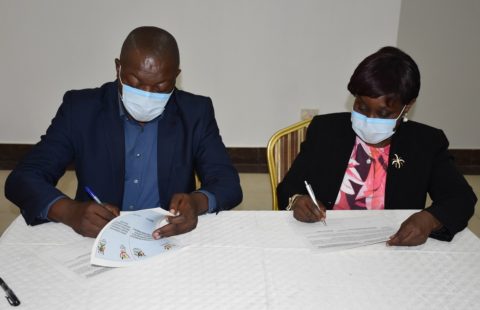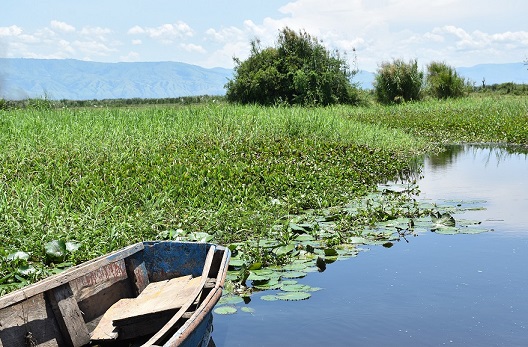The Governments of Uganda, Democratic Republic of the Congo (DRC) and Tanzania have signed Memoranda of Understanding (MoU) for the management of Semliki Delta and Sango Bay-Minziro transboundary wetlands. Anchored on two joint management plans developed in 2020, these MoU will aid in the governance and sustainable use Semliki Delta wetland which borders Uganda and DRC and Sango Bay-Minziro that straddles Uganda and Tanzania. They provide critical ecosystem services directly to 48,000 and 455,000 local communities respectively and for biodiversity conservation.
Semliki Delta ecosystem services are estimated worth is up to US$ 28 million per year and are used for agriculture, fishing, livestock grazing and construction. It is home to Queen Elizabeth and Murchison Falls National Parks which harbour thousands of birds, fish, insects, reptiles, plants and other biodiversity. The transboundary wetland has three key Ramsar sites – Lake George, Murchison Falls-Albert Delta Wetland System and Rwenzori Mountains. It also acts as an effective carbon sink in the region.
Sango Bay-Minziro’s services are worth approximately US$ 236 million per year and are critical for livestock grazing and crop farming, water regulation and supply, carbon storage and are rich in biodiversity. Minziro harbour a unique natural forest reserve found in central and western Africa.

Some road networks in Sango Bay ecosystem are affected by flooding owing to wetland degradation
Both wetlands face similar challenges such as poor agricultural practices and river banks degradation, overfishing, sand harvesting and vagaries of climate changes. However, Semliki has a unique threat as the river course shifts due to unsustainable practices upstream and degradation leading to high sedimentation downstream causing conflict on either side of the countries. Most of the river and delta forms the boundary between the two states.
Speaking after the Semliki Delta MoU signing ceremony, Jackson Twinomujuni, Commissioner for International Transboundary Water Affairs Department under Uganda’s Ministry of Water and Environment said, “River Semliki drains huge areas in Uganda and DRC and therefore there is need for joint structures for the use of this wetland. After a consultative process, a management plan was developed last year and we are now working on how to implement it. One of the implementation points is the formation of transboundary management committee(s) that will address challenges such as conflict arising from shifting of the river and many others.”

Lungu Malutshi (L) from Ministry of Environment and Sustainable Development, DRC and Lucy Iyango, Uganda’s Ministry of Water and Environment sign the MoU
Lungu Malutshi, Director in the Ministry of Environment and Sustainable Development for DRC stated, “Uganda and DRC are one and the same people sharing the Semliki Delta wetland. We must therefore work together as benefits from the ecosystem such as fisheries are not just local but also transnational.”

Lucy Iyango (L) of Uganda’s Ministry of Water and Environment with Tumaini Mwamyalla from Tanzania’s Ministry of Water after signing the MoU for Sango Bay-Minziro transboundary wetland
This initiative is part of the conservation and sustainable management of three transboundary wetlands in four countries that form part of the Nile Basin: Semliki Delta between Uganda and DRC, Sango Bay-Minziro in Uganda and Tanzania and Sio-Siteko straddling Kenya and Uganda. It is funded by the German Government and GIZ with Nile Basin Initiative and Wetlands International as the implementing partners working in collaboration with the national governments, devolved authorities, local communities and civil society organisations.
Lead image: Semliki Delta with DRC’s Rwenzururu Hills in the backdrop
